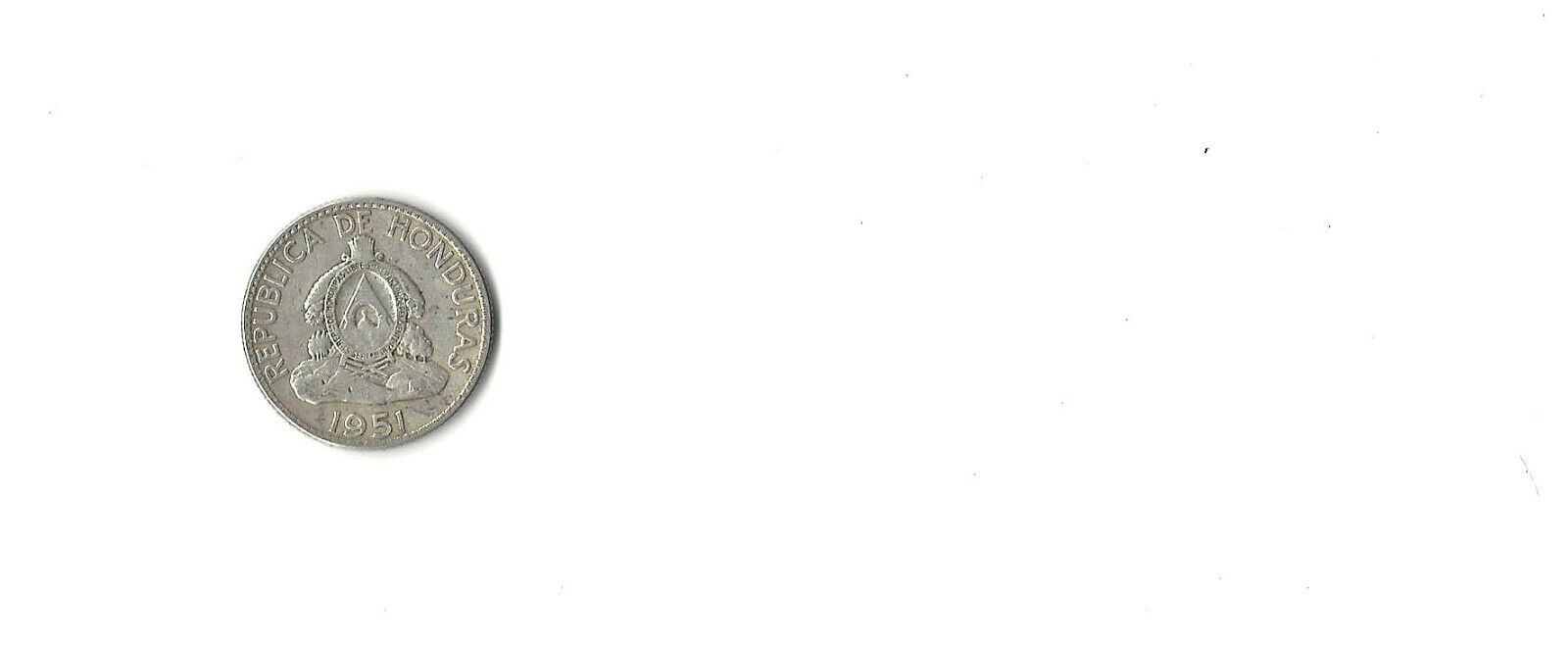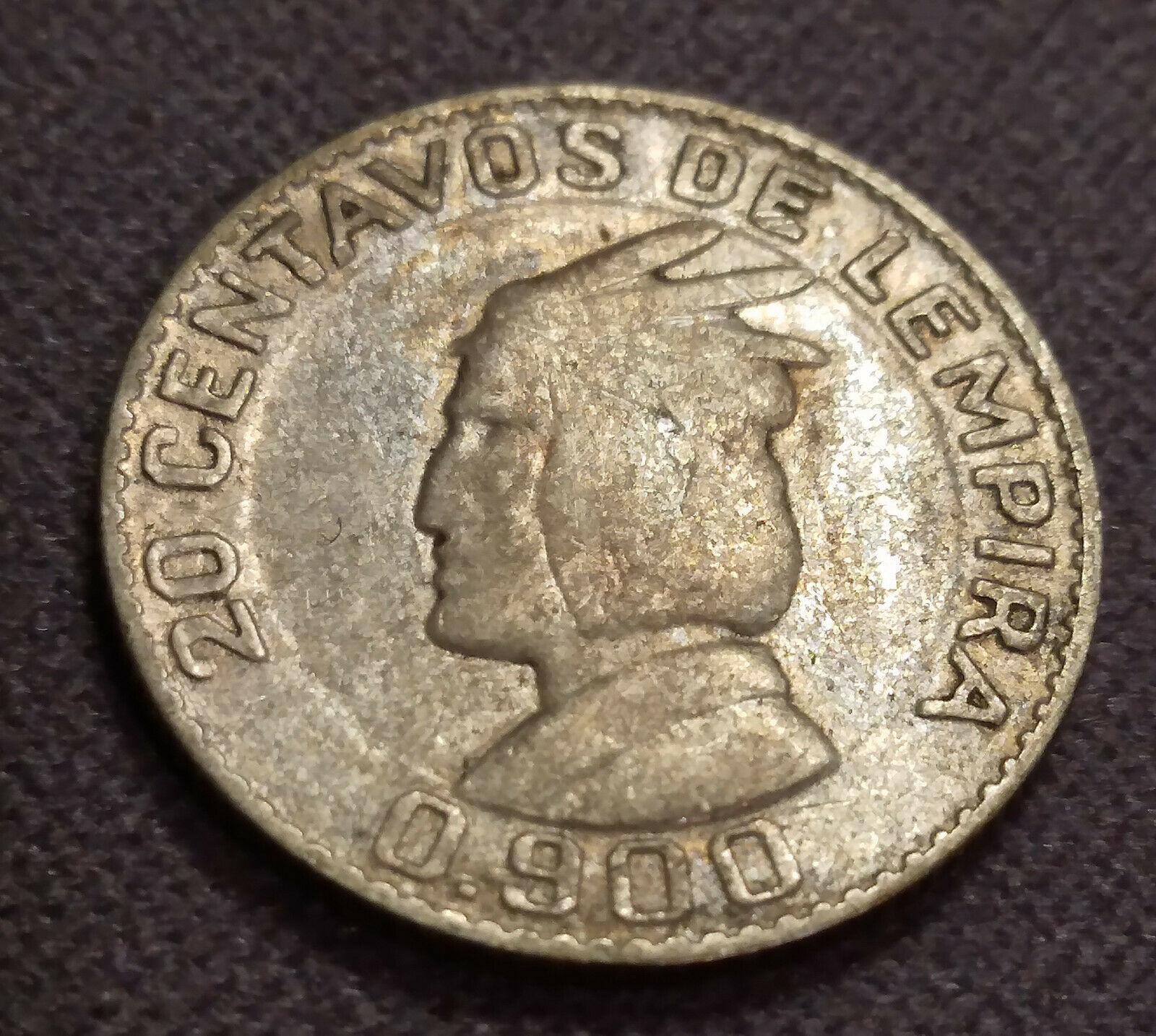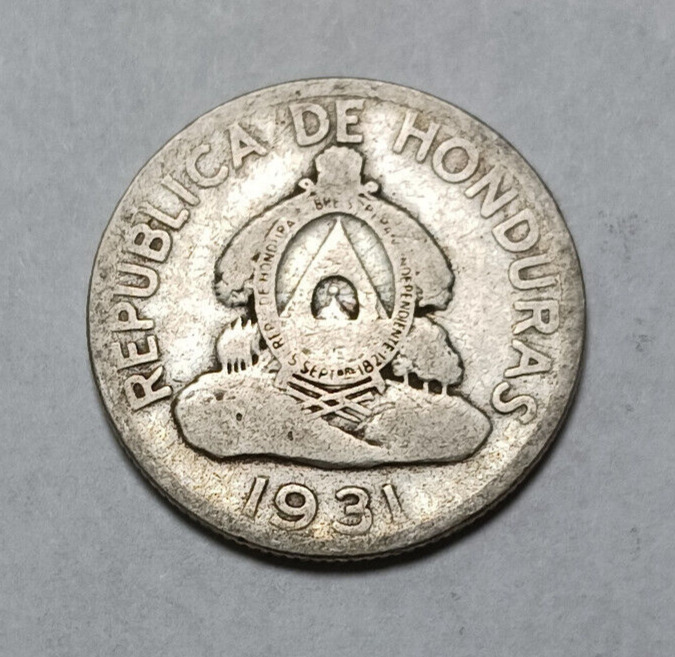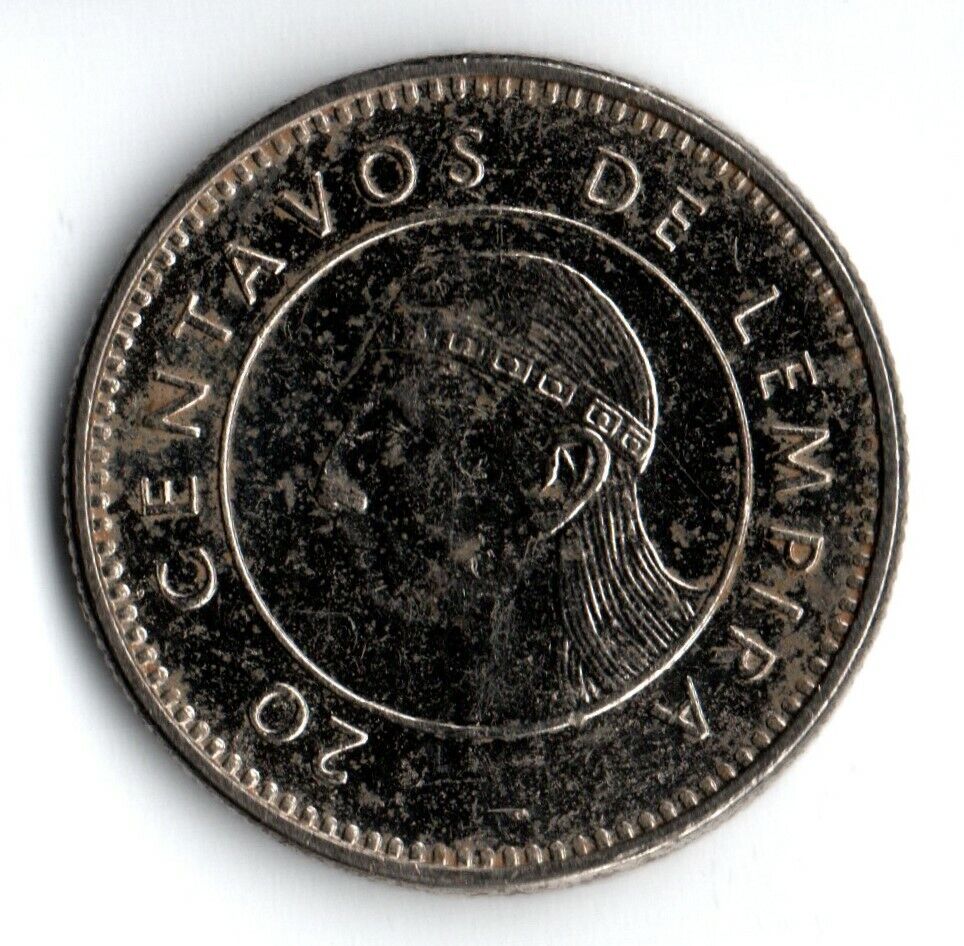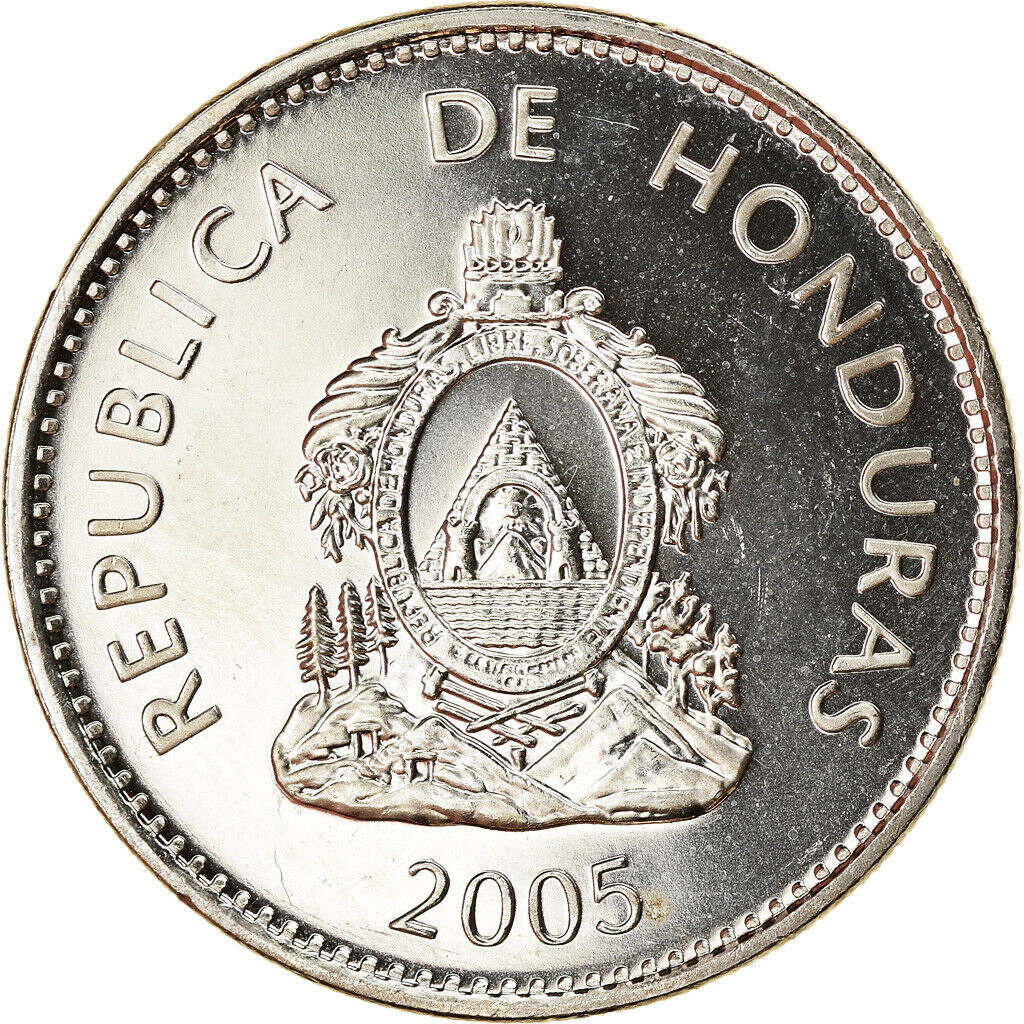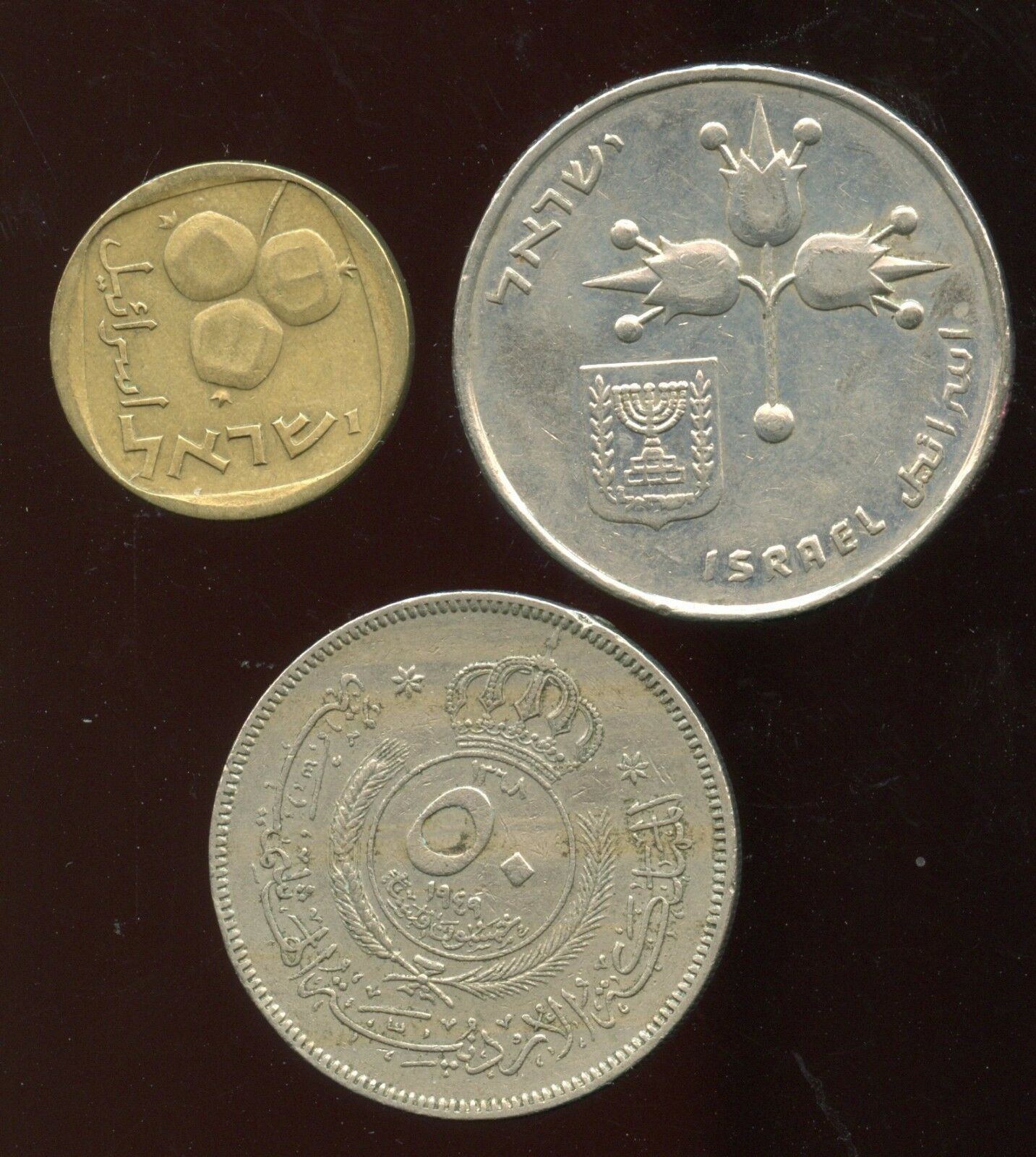-40%
SILVER TOSTON from HONDURAS: 50 CENTAVOS DE LEMPIRA COIN - 1951 - NICE!
$ 17.59
- Description
- Size Guide
Description
.900 FINE SILVER LEMPIRA 50 CENTAVO COIN from HONDURAS– 1951
In 1931 the Government of Honduras introduced a new national currency, the Lempira.
Named for a legendary brave Native American
cacique
who valiantly fought the Spanish
conquistadres
, the Lempira was originally fixed in value
vis-à-vis
the US dollar are a rate of 2:1.
One Lempira was, then
and for many decades, worth {{detail_product_description}}.50 US and the one Lempira coin was the exact size, weight, and silver content as the US half dollar. The 50 centavo coin (known as a
tostón
in Honduran slang) was the same size, weight and silver content as the US quarter, and the 20 centavo coin was the same size, weight and silver content as the US dime, and in fact it was called a “
daime
” in Honduran slang.
These coin size & weight equivalencies are not surprising when you consider the fixed rate of exchange to the dollar and the fact that the Honduran coins were minted for the GOH by the US mint in Philadelphia.
Lempira coins were first minted in 1931; in this year and also in 1932, all three denominations --the one Lempira, 50 centavo and 20 centavo coins-- were minted.
Thereafter different denominations were minted on different sporadic years.
To the best of my knowledge, the 50 centavo pieces were minted only the four years 1931, 32, 37 & 51.
For auction here is a 1951 50 centavo coin, the last year they were minted in silver.
Although I collected coins for many years, I am not a numismatist and will not attempt to grade this coin.
What I will say is that this coin, IMHO, is in very nice condition, better than generally seen.
Whereas one Lempira coins are often still in very excellent condition,
tostones
and
daimes
are commonly found in quite worn condition.
I suspect I know why this is: when I first lived in Honduras in 1969, the daily wages for an unskilled laborer were only Lps. 2.00; thus, a Lempira was a considerable sum to a
campesino
–half a day’s wages—and accordingly, these large coins were not used and circulated as much as the smaller denominations.
The first image shows the reverse side of the 50 centavo piece; the second image shows the exact same coin, but flipped over to show the obverse.
When viewing these images, please remember that the coin is the same size as a US quarter.
